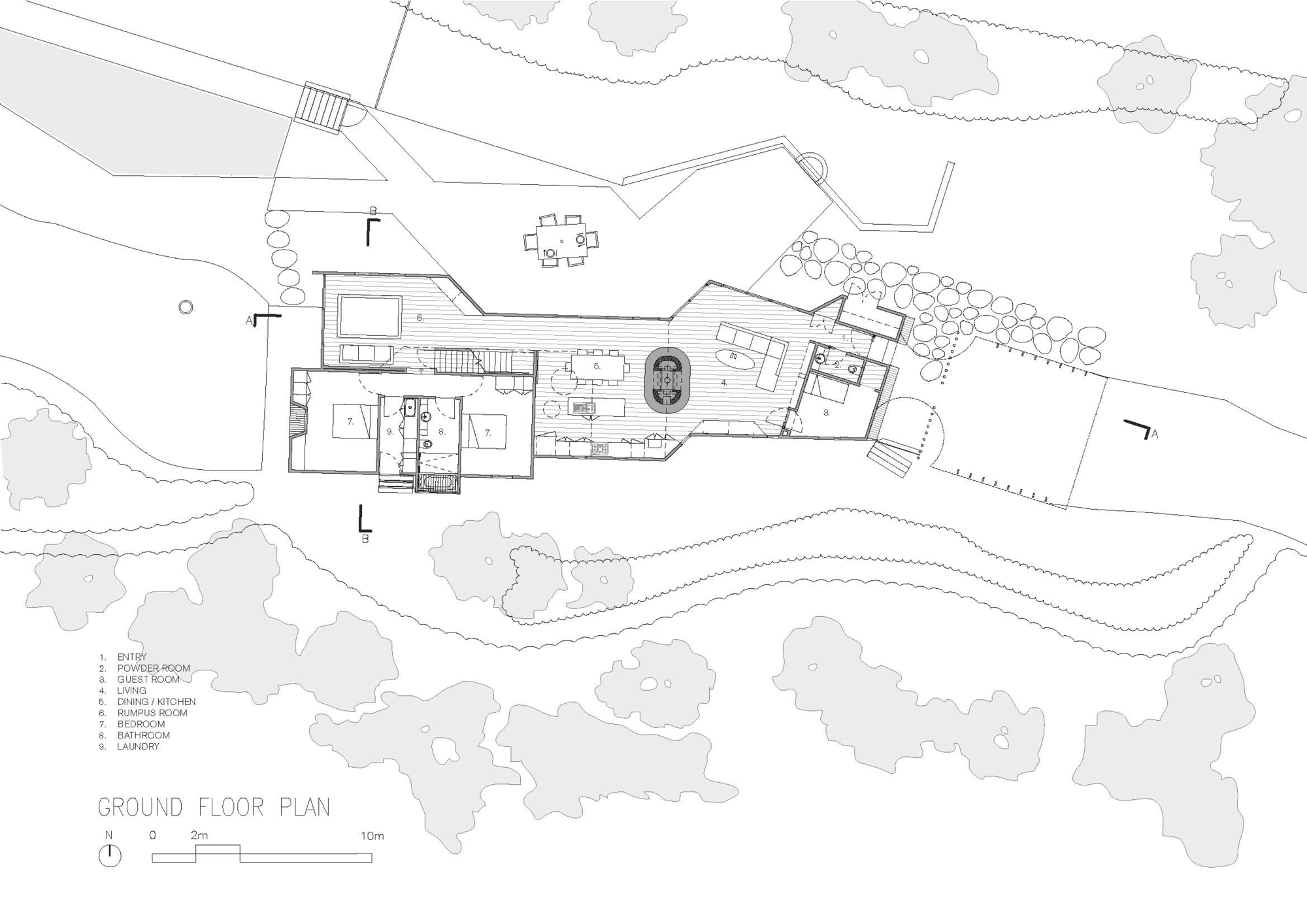Sustainable, spacious and comfortable, the Holiday House in Mornington Peninsula, Victoria, Canada was designed by BKK Architects and was completed in 2012. It flaunts 2,583 square feet of living space and ensures privacy as well as comfortable living conditions to its inhabitants. In order to ensure a direct connection between the abode and its surroundings, the architects facilitated access to a Northern courtyard while creating a more discrete link to the rear of the site via the children’s play area.
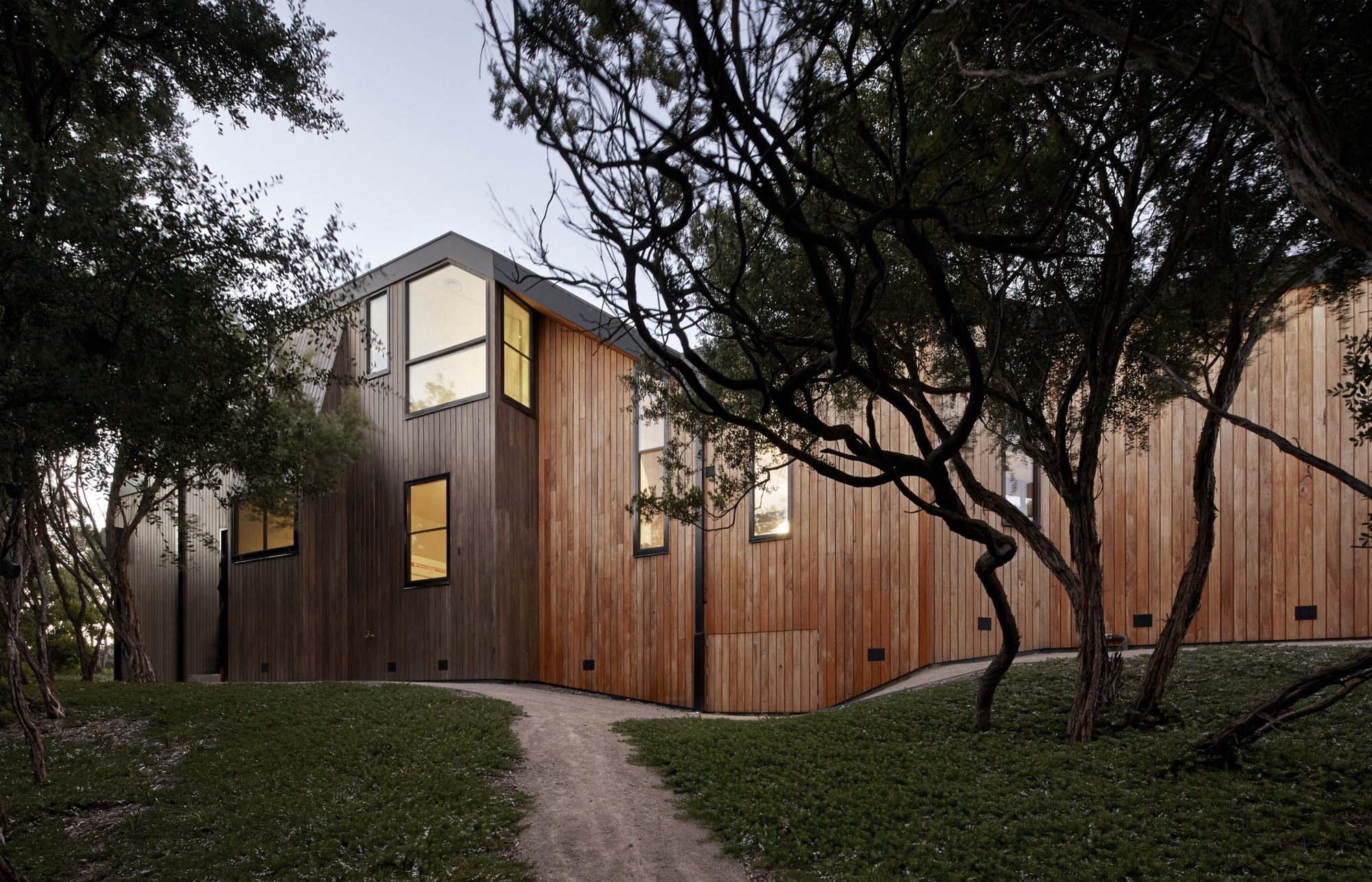
The master bedroom is located upstairs while the children’s living areas are found downstairs. The link between the indoors and outdoors was enhanced with the help of shiplap cladding and silvertop ash. At the core of the home, we find a sculptural stone fireplace that anchors an elongated gabled roof.
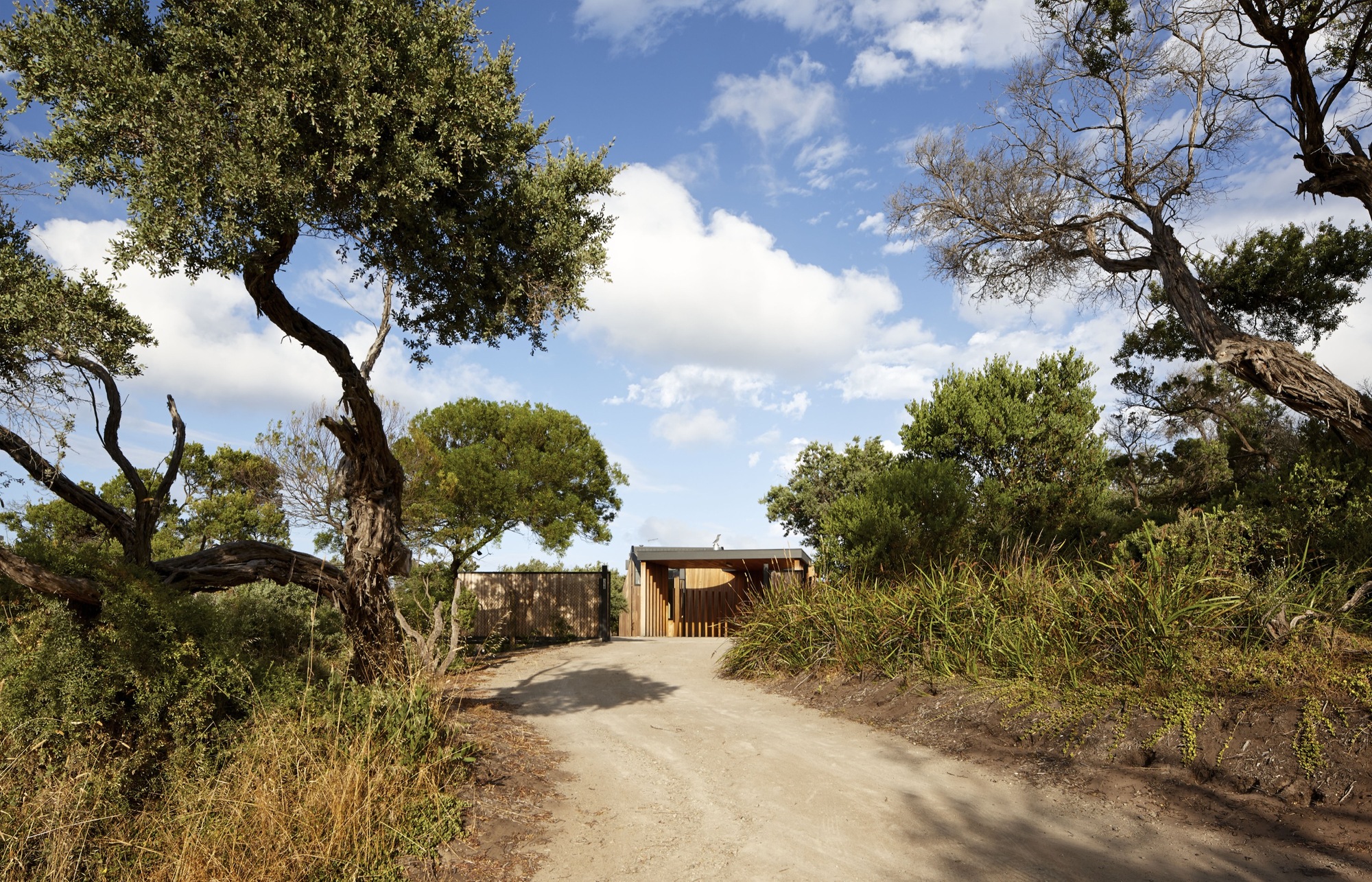
The Holiday House is highly sustainable and eco-friendly, as it was built using low-maintenance materials and features double glazing for optimum insulation. The Northern orientation boasts deep eaves that dramatically reduce the need for heating and cooling. During the warm months, natural ventilation ensures a comfortable indoor temperature thus eliminating the need for air conditioning systems.
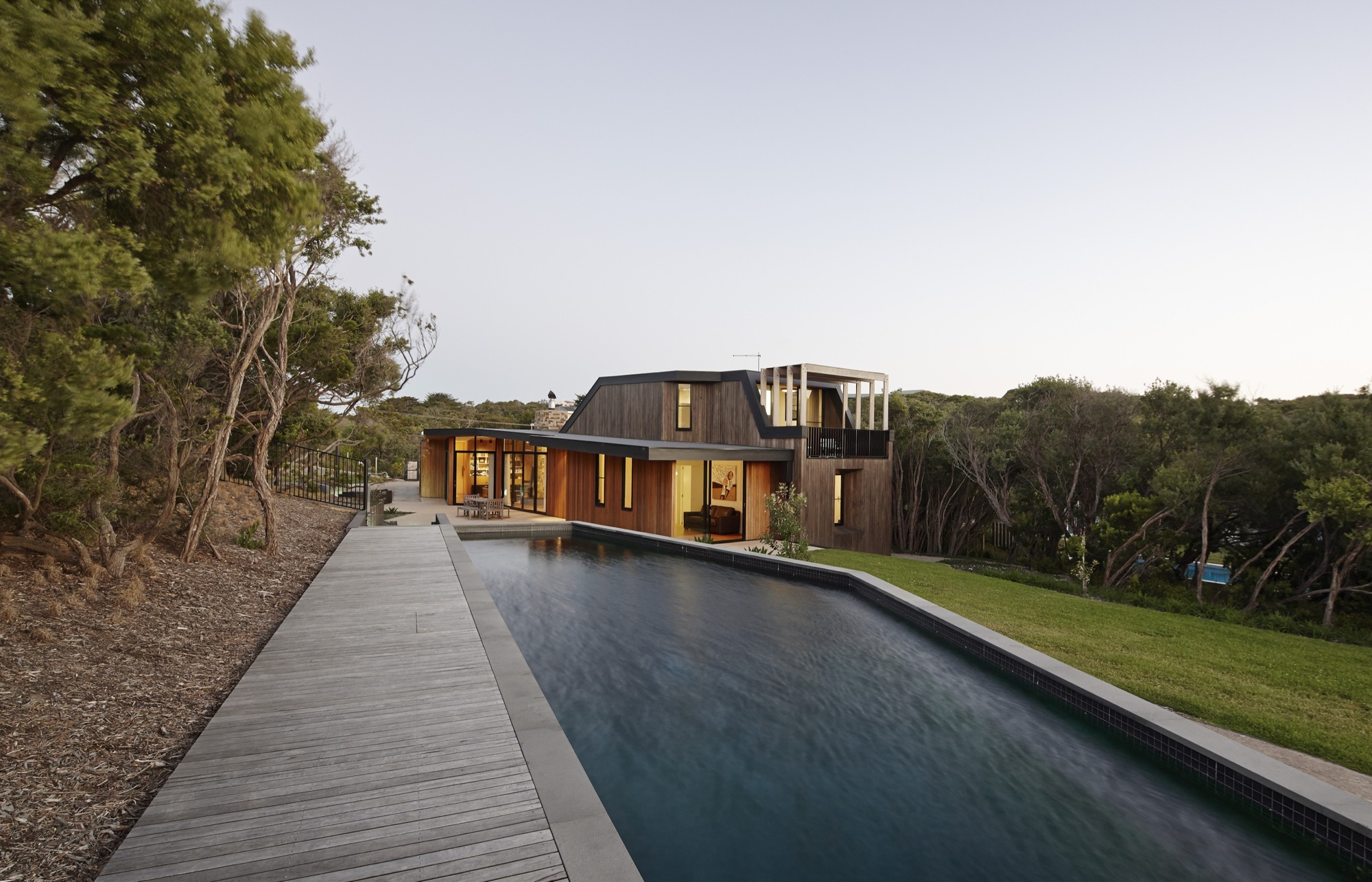
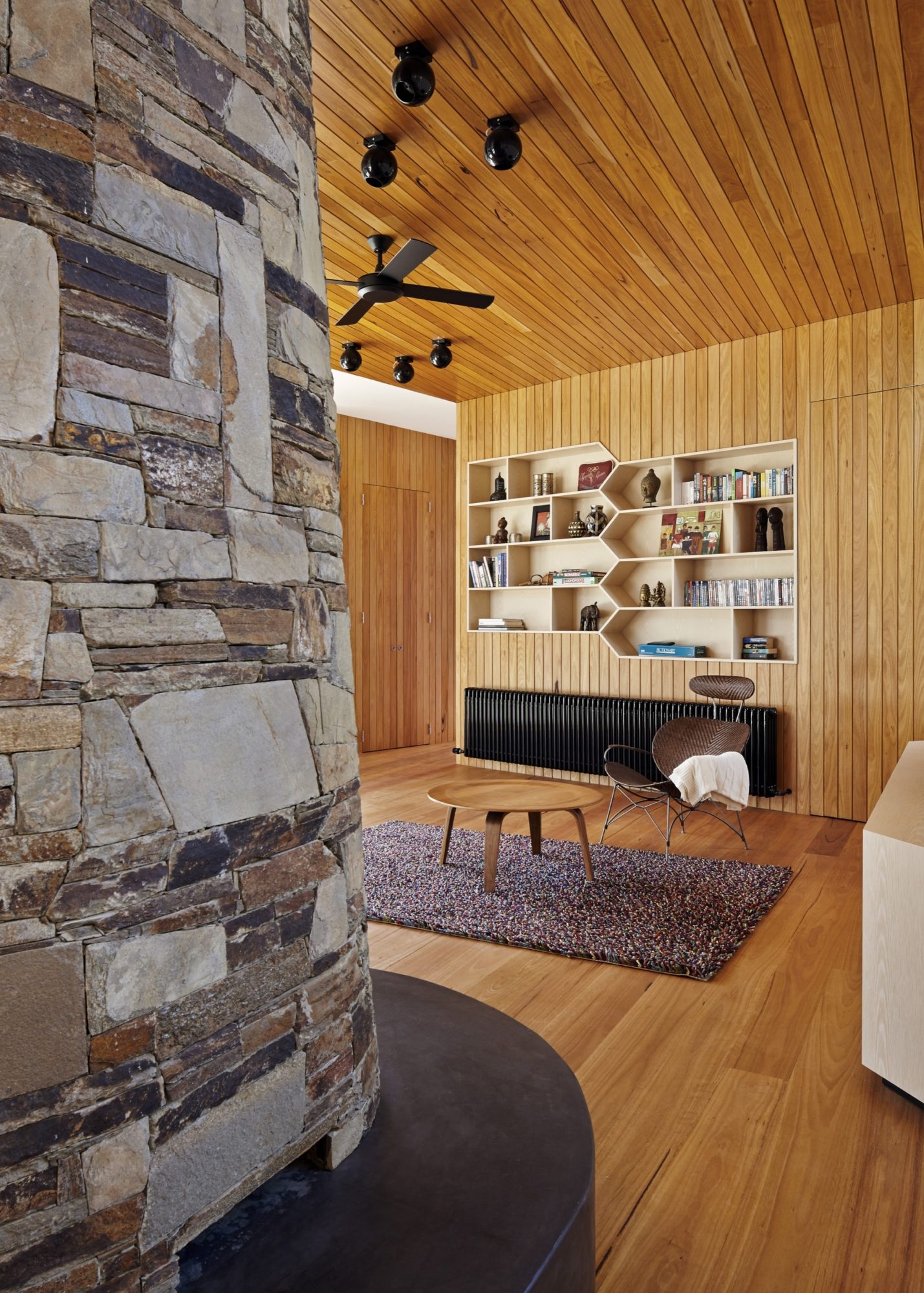
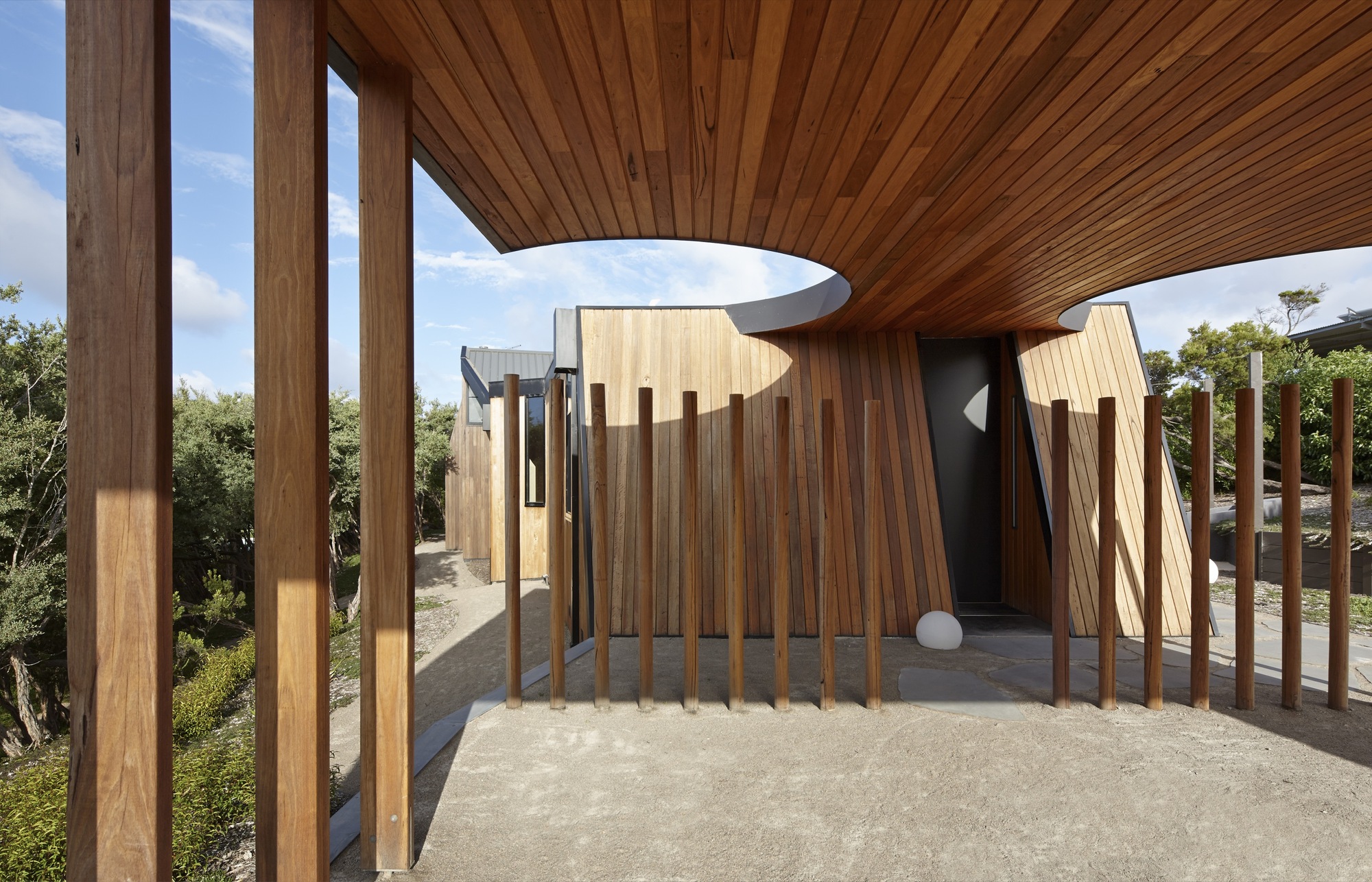
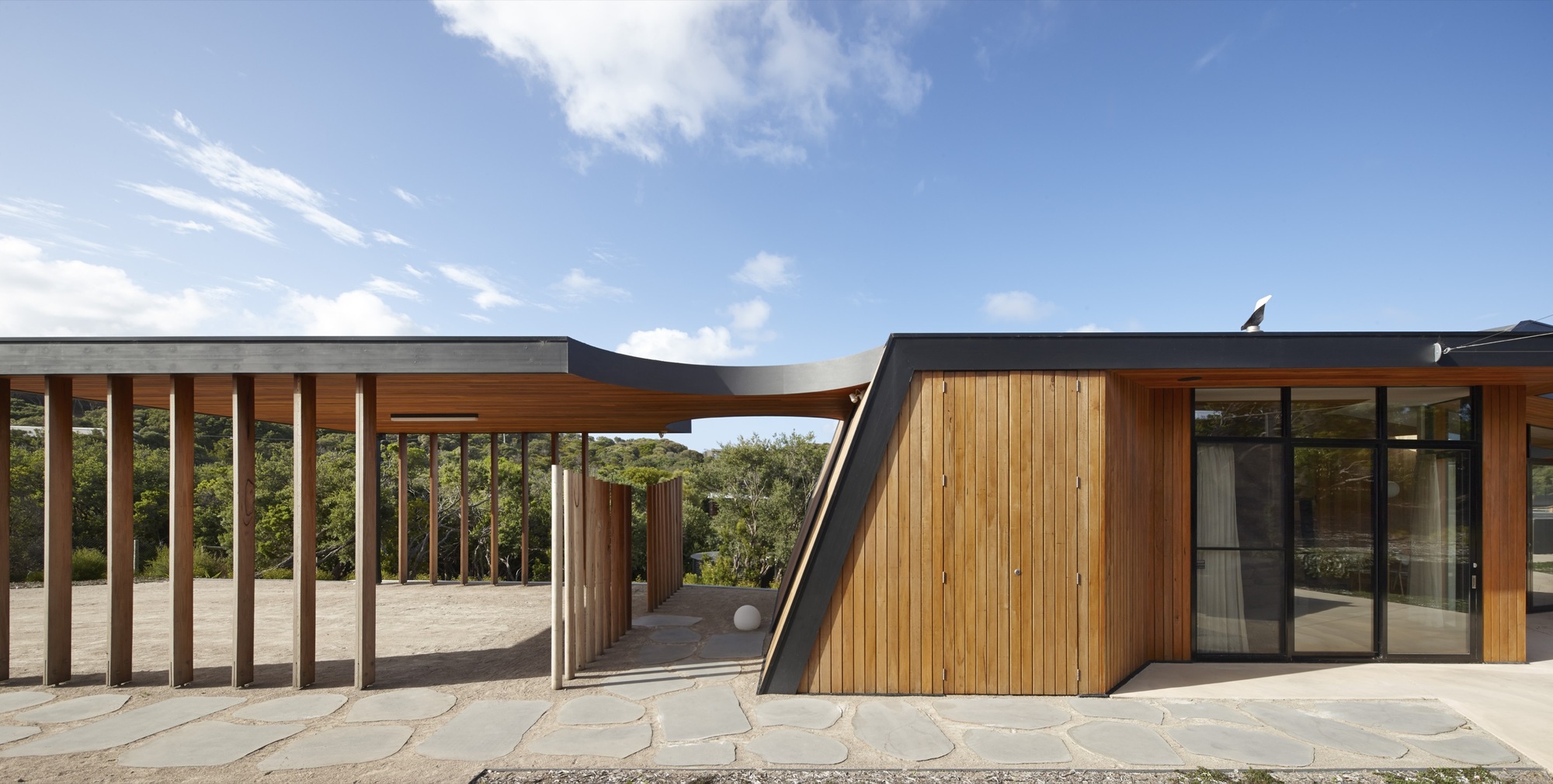
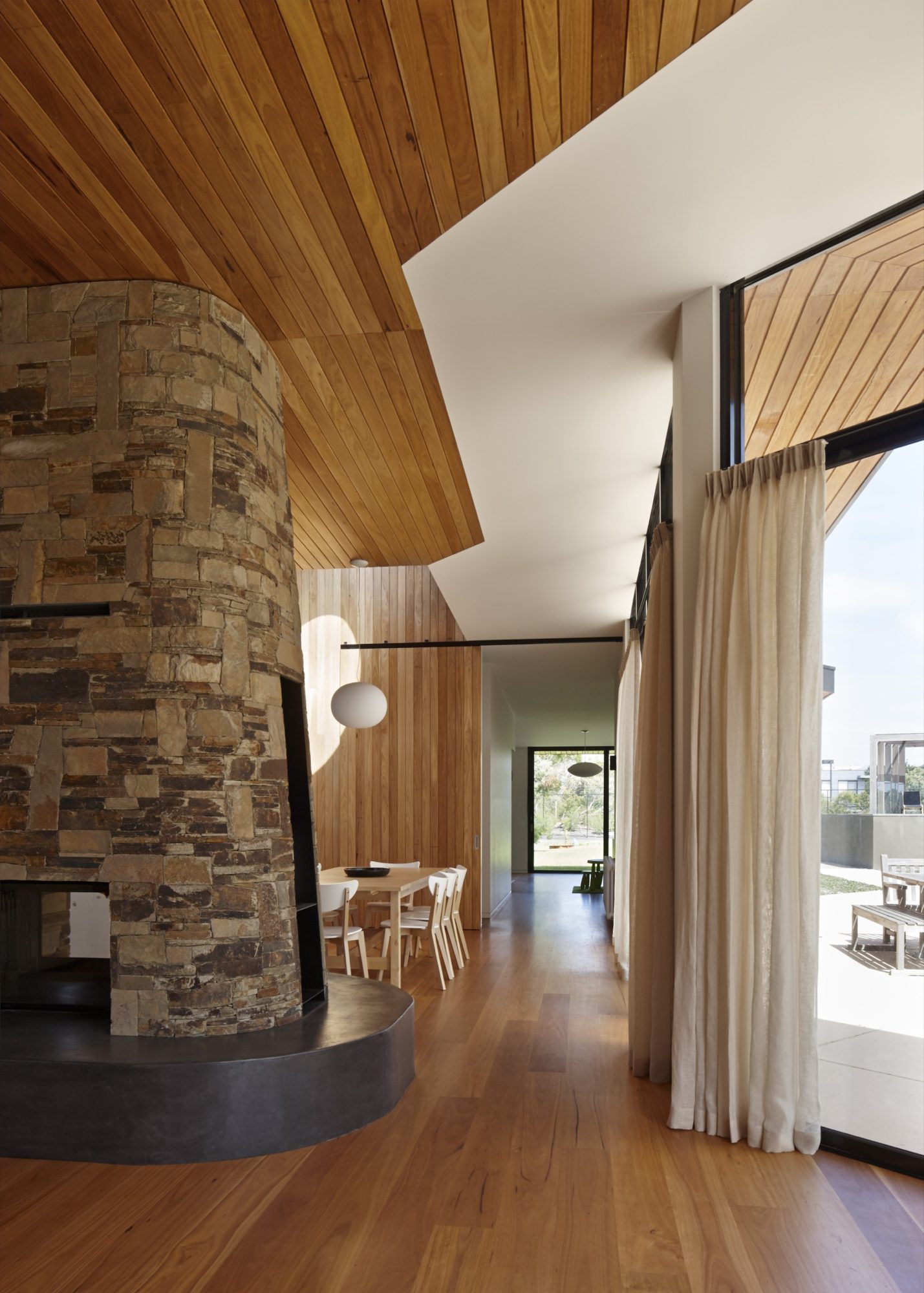
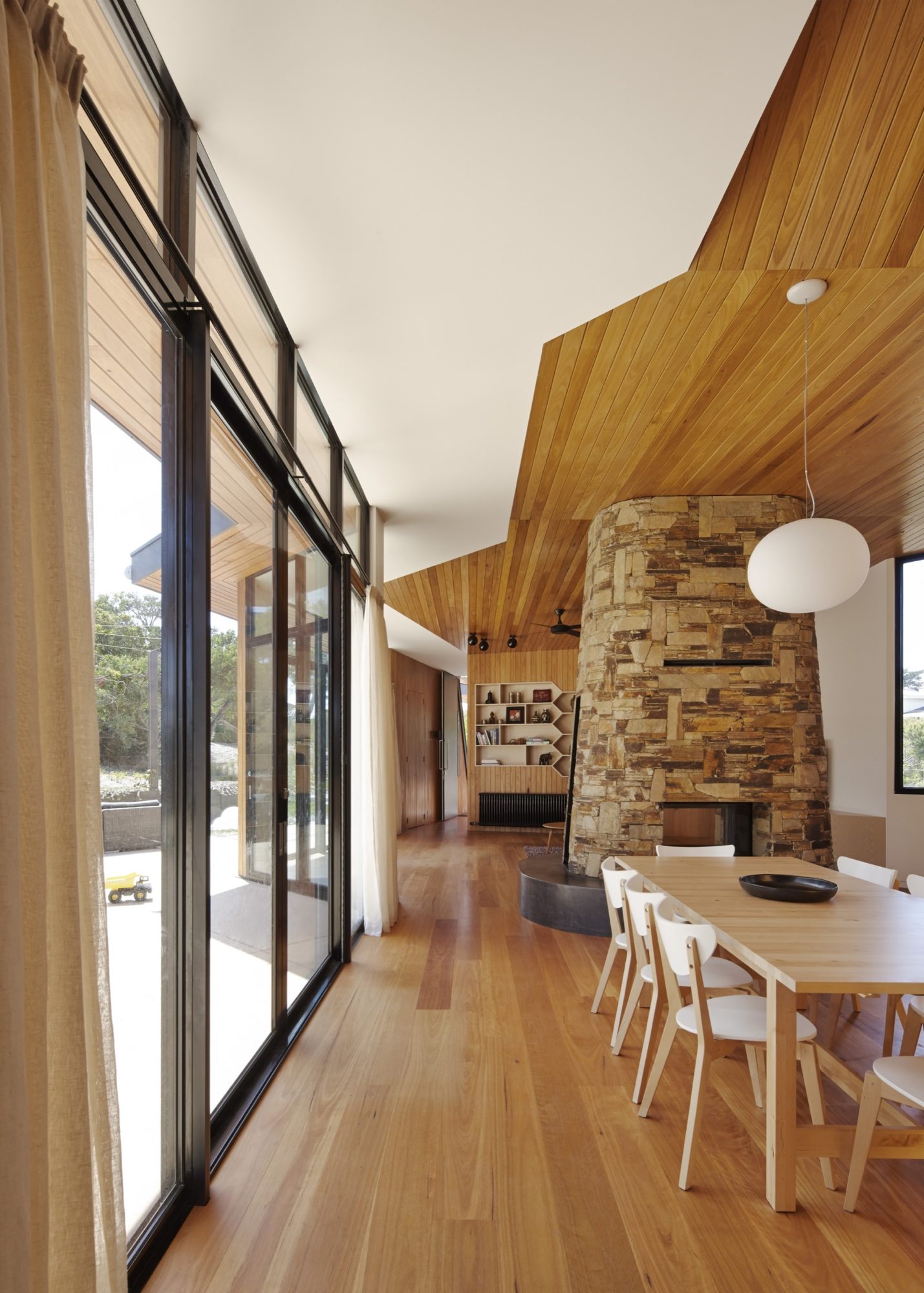
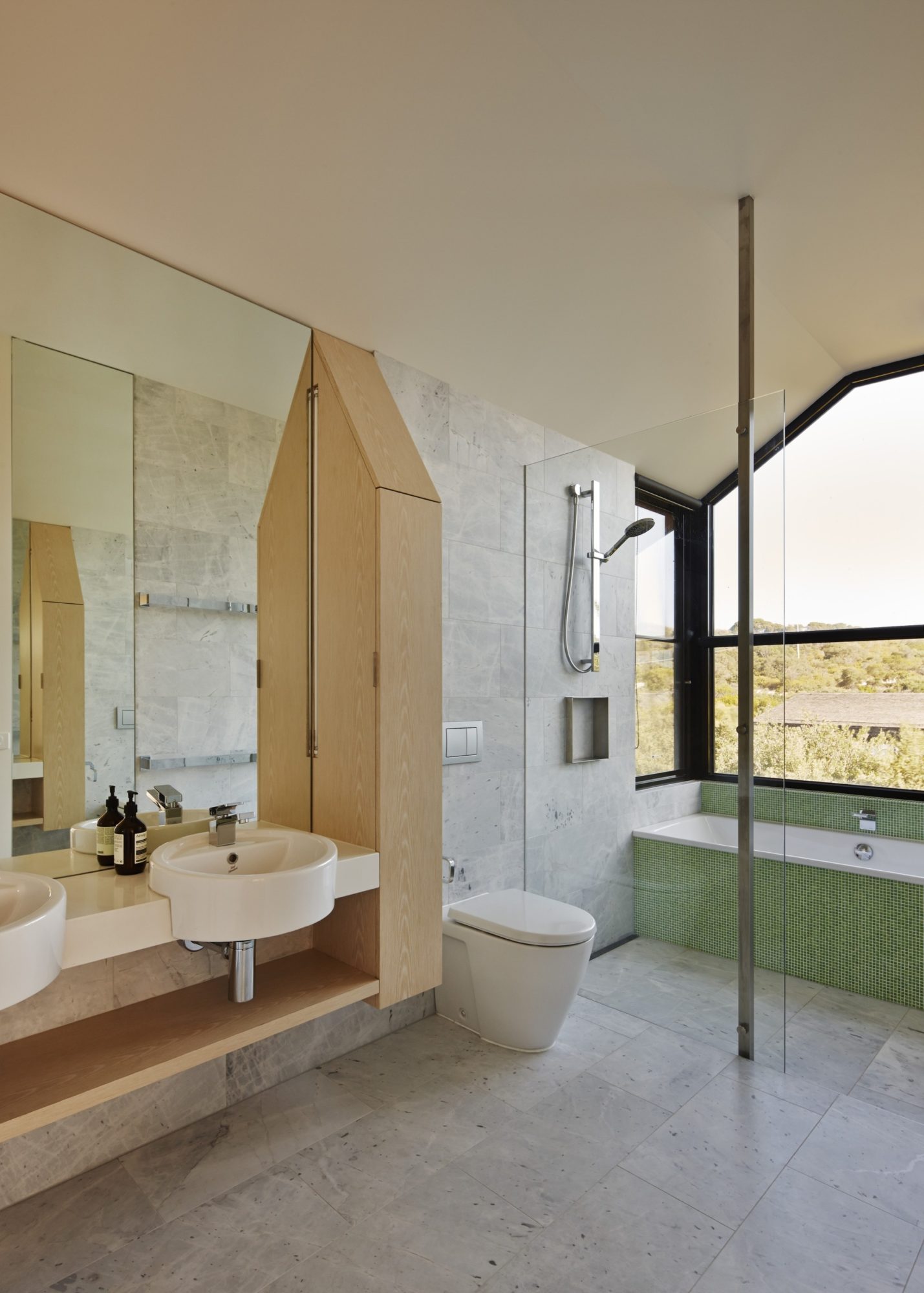
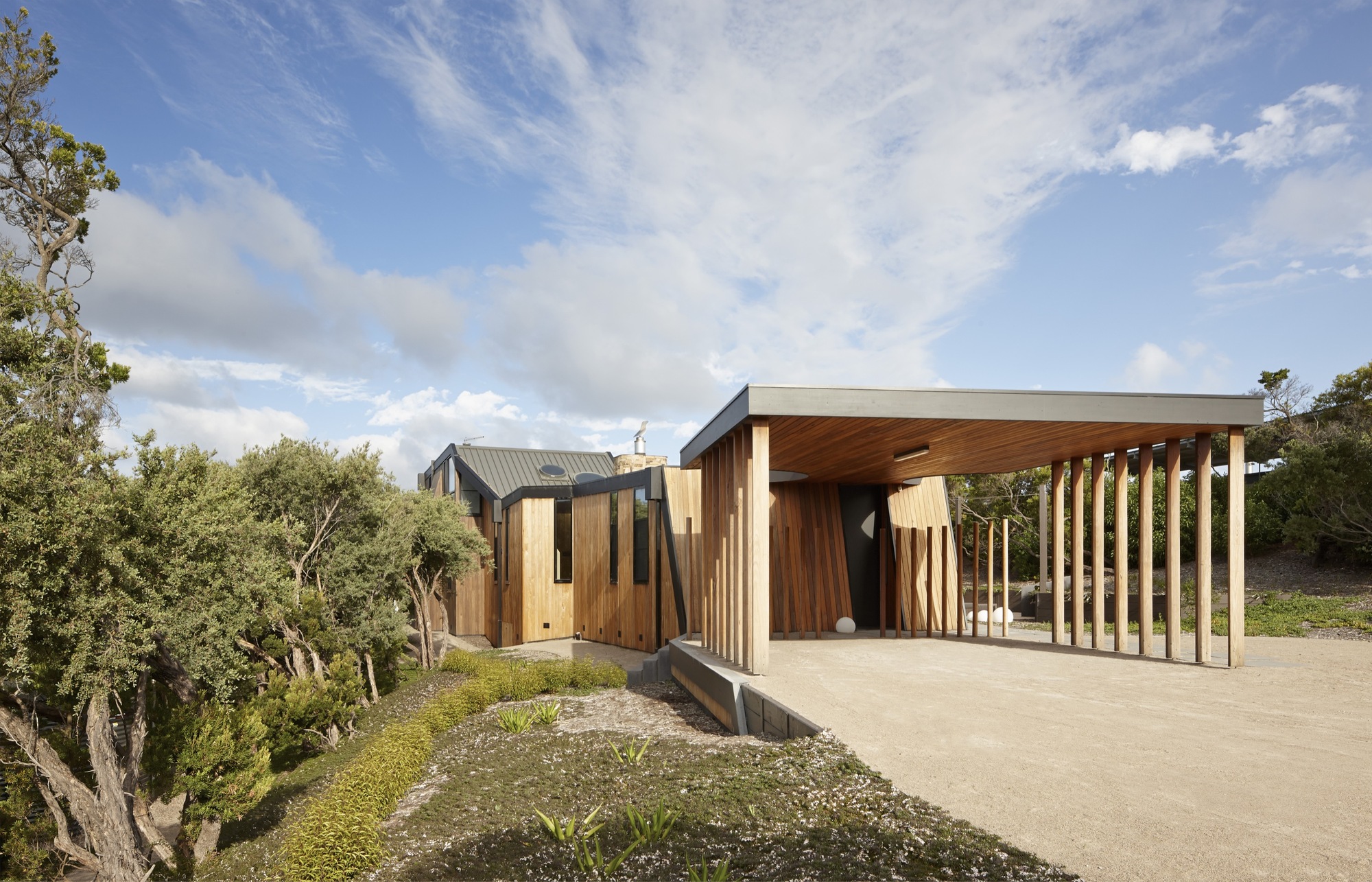
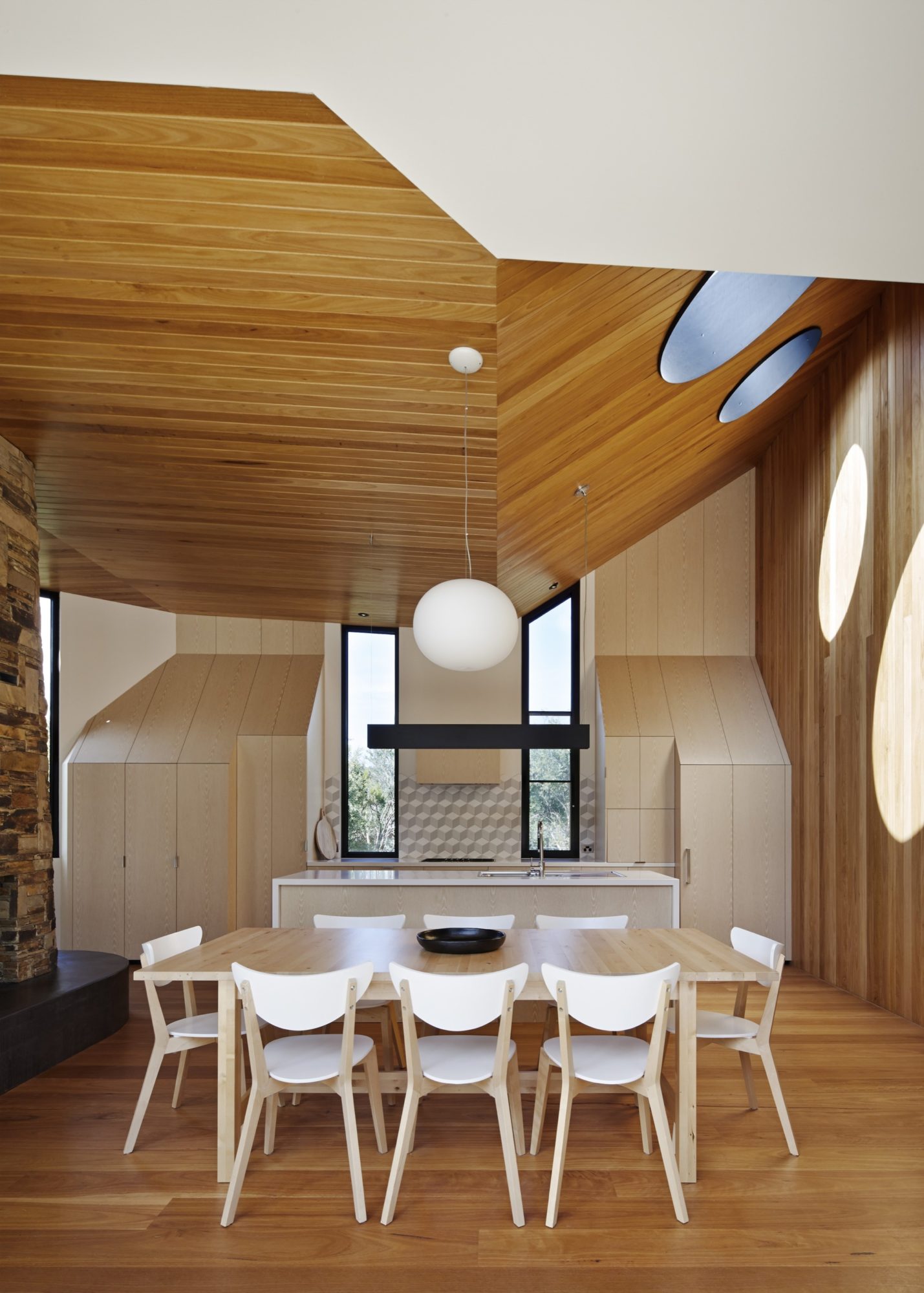
From the architect:
Set within coastal vegetation, on an elevated site on the Mornington Peninsula, the Holiday House presents a low slung, non-descript street presence. The site is accessed via an unsealed road from which adjacent properties are generally set back behind a natural green buffer, lending the surrounds a distinctly informal character.
Eschewing local trends towards ever increasing house size, at 240m2 the Holiday House embraces the notion of the family weekender as a quiet place where interaction, intimacy and flexibility are celebrated.
The project brief called for a strong connection between the house and its coastal environs, especially in terms of the local ecology and the site’s undulating, sandy topography. As a house for a young family, the design approach sought to strike a balance between the needs for privacy and togetherness; the linear house plan reveals itself as a sequence of complex spatial experiences that each have their own distinct quality, with principle living areas arranged asconnected rooms that can be zoned off for individual use or opened up for more communal activities. Direct and varied connections to the surrounding landscape were critical, providing direct access to a Northern courtyard embedded within the site’s natural contours, and a more discrete Western connection to the rear of the site from a secondary living/children’s playroom.
Sleeping areas within the house have been zoned to provide separation between the master bedroom upstairs and the children’s bedrooms below, which step down from the primary living areas towards the low lying, Southern side of the site. The spatial organization in plan and section anticipates changes in family dynamic as the children grow up, and provides a range of views to the surrounding landscape, frommore intimate direct aspects to the surrounding tree trunks and undergrowthat ground level, to more sweeping vistas across the treetops from the master bedroom above. Varying qualities of light and shade were carefully considered in the curation of window openings to enhance varying degrees of privacy and engagement with the surrounds.
The Holiday House is innovative in its modesty, privileging a sense of tactile, intimate experience in the arrangement of interior spaces and their finish over scale. The house is not ostentatious but rather celebrates a sequence of arrival and connection between relatively small spaces that each have their own distinct quality. The geometry of the house plan informs the way internal spacesare articulated internally and provides a language for the house that continues in the treatment of building elements down to the smallest detail. In- built joinery, window openings and wall patterning all take their cue from the plan form, comprising a family of elements or variations on a theme.
The use of silvertop ash, shiplap cladding internally and externally enhance the connections between inside and out, unifying the principle living areas beneath a folded ceiling line. A sculptural stone fireplace occupies the centre of the house and is its social heart, acting as an anchor point from which the primary, elongated gabled roof form is hung.
Sustainable Architecture
At the outset the intention for the Holiday House was to provide a minimal footprint and retain as much of the site’s remnant vegetation as possible (as far as fire regulations would allow). Materials throughout the house were selected for their natural warmth, robustness and low embodied energy, with extensive use of low gloss, low VOC finishes intended to enhance a sense of quietness by muting the extensive, incoming natural light. The palette is deliberately restrained, taking its cue from the sandy soil and coastal vegetation of the site, and was carefully considered with regard to minimizing ongoing maintenance.
Steel construction was minimized in the structural design and finishes to simplify the build and reduce overall embodied energy in the material specification. Double glazing was employed throughout the house and a highly insulated building fabric specified to minimize ongoing energy costs. Furthermore, the house employs extensive passive solar design initiatives such as deep eaves and Northern orientation to minimize heating and cooling demand. Extensive cross ventilation was provided; no mechanical cooling is required.
Location: Mornington Peninsula, VIC, Australia
Design Team: Julian Kosloff, Simon Knott, Tim Black, George Huon, Jane Caught, Stephanie Bullock, Madeleine Beech, David Sacher, Julian Faelli, Phil Moloughney, Simon Linardi
Area: 240.0 sqm
Year: 2012
Photographs: Peter Bennetts
Structural Engineer: Irwin Consult Pty Ltd
Services Engineer: BRT Consulting Pty Ltd
Building Surveyors: Group II Building Surveyors
Land Surveyor: Marcus Kalkman & Associates
Quantity Surveyor: Cost Planning & Economics
Landscaping: Eckersley Garden Architecture
